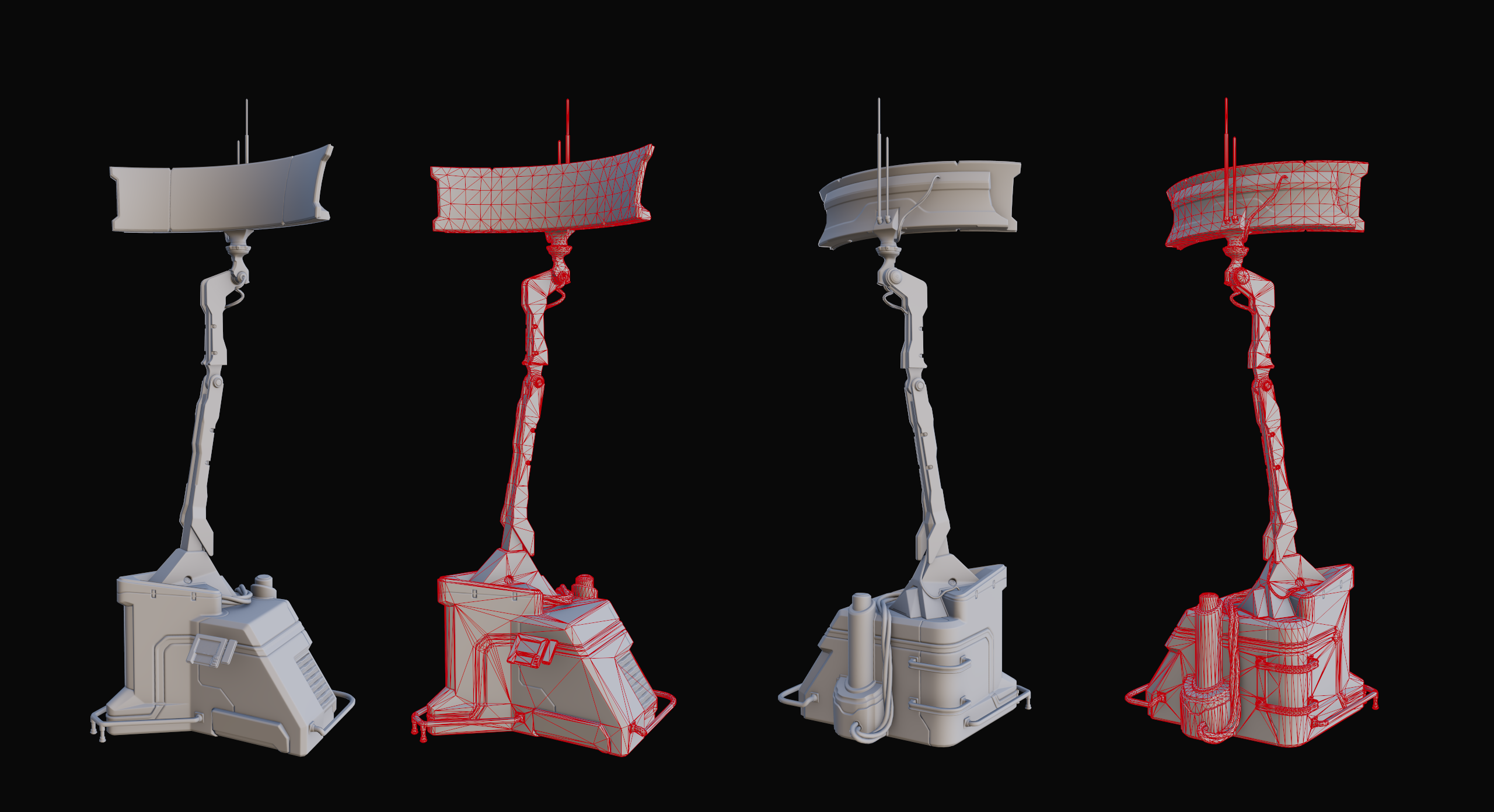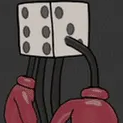The BRAWL² Tournament Challenge has been announced!
It starts May 12, and ends Oct 17. Let's see what you got!
https://polycount.com/discussion/237047/the-brawl²-tournament
It starts May 12, and ends Oct 17. Let's see what you got!
https://polycount.com/discussion/237047/the-brawl²-tournament
Best Of
Re: [FINISHED] Scifi Antenna
Hello! It's been a long time since the last update, but I finally found some time to continue working on this model. I refined the high-poly version and created a low-poly model with around 11.6k triangles. Here’s the result after baking the maps. The mechanical arm is split into separate pieces for animation.

2 ·
Re: Struggling with Head Anatomy – Need Feedback to Break the Cycle
Have you heard of the loomis and Asaro methods? Of head construction.. should help with planes of the face switching between 2D and 3D might help you there.. I would suggest spending time on areas away from heads like anatomy, musculature, texturing anything else at all that will help improve other areas. When you do circle back to heads I strongly suggest studying the tissues and muscles bone structure of the human head not just a visual sculpt from pictures unless you're already doing that try to reconstruct a human head in all of it's anatomical parts under the skin. Something over looked is that blood fluids, fats etc change the shape of a face in subtle ways.. A person upside down looks different from their right side up counterpart
Seriously good stuff keep up the good work
 bayonetricochet
bayonetricochet
1 ·
Re: Sketchbook: Zetheros
A lot of the design choices are mostly solid now, been going through and eliminating a lot of subpar or awkward design choices I made early on. I don't think much will change, all that's left is polish and finishing up. Stomach and lower back still needs work IMO.




Have a great week!




Have a great week!
 zetheros
zetheros
2 ·
Stylized 2D Concept artist looking for work
I'm a Canadian concept artist with production focused work doing characters, props and vehicles! Peep my full portfolio here:
ArtStation - Josh Abenojar
Let's work my contact email is joshhabenojar@hotmail.com


ArtStation - Josh Abenojar
Let's work my contact email is joshhabenojar@hotmail.com


 joshhuabenojar
joshhuabenojar
1 ·
Re: Advice with secondary forms
sorry for not getting back earlier, what i meant is that you introduce mechanical looking patterns be having always the same distances and sizes of things.

but besides that, i feel like that you are polishing things too early and often, trying to get a clean result, cleanlines that seem to go on forever. which can be a style choice of its own but looking at the reference i dont think is the way to go.
i do wonder if it would be benefitial for you to cut back on brushes and tools for some time, step down a subdiv level or two and work exclusively with a clay (or claytubes) brush. dont use smooth, dont use i dunno dam standard or pinch. do all the shape buildup and take aways with clay, polish with clay. be lose, be messy, be organic
1 ·
Re: Sketchbook: Wizo (Art Dumpage)
since 2008, whuuweee, inspiring! congrats on keeping on.
 iam717
iam717
1 ·
Re: [WIP] Clive Rosfield - Stylized
Thanks for the comments again!
I don't think i was deliberately going for the softer look of the metals haha.
I sorta have been doing this for most metal sculpts ever since I read somewhere that doing so makes it read better by exaggerating the bevels/edges; mainly for game assets.
I probably would keep it this way, at least for this project!
I don't think i was deliberately going for the softer look of the metals haha.
I sorta have been doing this for most metal sculpts ever since I read somewhere that doing so makes it read better by exaggerating the bevels/edges; mainly for game assets.
I probably would keep it this way, at least for this project!
1 ·
Re: My glass objects on small items keep disapearing in unreal when view from a distance
the unreal forums are largely useless in my experience - although tbf so are the secret developer ones if you want any info other than stuff pertaining to getting packaging working on whichever console they broke this week
you'll get a folder full of crap when you build a project - exactly what the crap is will depend on your build target and which options you select but you can basically just zip the folder up and send it to someone
you'll get a folder full of crap when you build a project - exactly what the crap is will depend on your build target and which options you select but you can basically just zip the folder up and send it to someone
1 ·
Re: My glass objects on small items keep disapearing in unreal when view from a distance
I really appreciate your help, thank you! I also reached out to Unreal, and it's amusing how you respond to me faster than they do. I've been posting on forums, but I'm not receiving any replies.iam717 said:cturbo said:are the assets included in that package,i personally do not know but there are videos while you wait for a direct response also doesn't unreal Ed. have forums to ask if they aren't already you could ask there not that we do not enjoy traffic here it is just if you are time stricken-ed i would try all avenues also otherwise:i am only trying to help idk anything about anything, anymore.
1 ·

 https://www.youtube.com/watch?v=O2PKihXmejw
https://www.youtube.com/watch?v=O2PKihXmejw